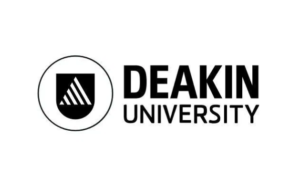Our Projects
Palm vein biometric scanning solution

Project description and overview:
Card or token based identification and access control is commonly used by organisations and in locations with large numbers of users and/or members. At Universities for example, staff and student ID cards are issued to manage personal identification, physical access to campus locations, electronic payments on campus and various other transactions such as library borrowing. Whilst workable, card or token-based identification has several inherent problems:
- Physical cards are not personally secure and are easily forgotten, shared, lost, or stolen, which then presents security risks.
- User inconvenience when physical cards or tokens do not work or are lost and need to be cancelled and reissued.
- The lifetime costs of managing, cancelling, and replacing cards are significant. Costs amount to over $1,000 per user.
Considered to be the only viable solution to any card-based identification problem is biometric technologies which use scanning patterns of a person’s anatomy. Biometric technologies provide enhanced security and convenience, as well as eliminating complexity and security risks. They are inextricably linked to individuals and therefore cannot be forgotten, counterfeited, or stolen. They enable users to automatically confirm identity by comparing patterns of physical or behavioural characteristics in real time against enrolled computer records.
Of all potential biometrics solutions, Palm Vein (PV) biometric identification, over which AerVision has patented technology with its AerPalm system, is an advanced solution.
- PV biometrics are extremely accurate, cost effective and simple to use.
- Every PV pattern is unique. An individual’s PV pattern remains the same throughout their life.
- The PV pattern is hidden under the skin and is detectable only when blood is flowing. It therefore cannot be forged.
- Palm veins are thicker than finger veins, so the PV pattern is much easier to identify.
- PV biometrics are not sensitive to environmental conditions
- PV identification is based on “no contact” as the user only needs to hover their hand over the reader. The process is therefore hygienic to use – a benefit which has become desirable due to COVID-19.
AerVision’s proposed palm vein biometrics solution (AerAccess) has the following advantages over competing alternatives:
- Highly reliable; AerAccess’s advanced biometric authentication algorithm delivers ultra-low FAR (false accept rate) of one millionth of a percent and FRR (false reject rate) of one hundredth of a percent.
- Encrypted repository for template storage and enterprise level event logging capability.
- Fast and easy registration with virtually no enrolment error.
- Fully compliant with cyber security and privacy requirements.
- Contactless; PV authentication is hygienic, non-invasive and highly durable.
- Can be retrofitted into any wall or surface.
- Cost effective
- AerAccess’s PV system has 99.99% accuracy compared to 95% accuracy of only facial or finger biometric systems.
The aim of this project is to design and manufacture, a commercial version of the Palm Vein Biometrics Solution. This version will be specifically developed for use on university campuses and other access control/security applications, including commercial and residential buildings, hospitals, airports, schools, factories, defence establishments, and in fact any organisation that currently uses access cards to establish identity or grant physical access.
EXPECTED IMPACT
- Increased spending on R&D
- Higher information and communication technology (ICT) intensity
- Larger patent portfolio
- More automation
- Larger geographical reach
- Increased trade intensity
EXPECTED GROWTH
AerVison Technologies estimate sales for the 5 years to 2025 are:
- FY2020 $840K
- FY2021 $3.4M (requires the conversion of two major accounts)
- FY2022 $9.6M
- FY2023 $19.3M
- FY2024 $27.3M
EXPECTED JOBS
AerVision anticipates generating the following increase in employment:
- 2 to 3 additional staff with engineering and software development domain skill
- 15 to 18 technical service and support personnel on conclusion of the project
Contributions:
Government Funds: $263,377 | Industry: $263,377 | In-Kind: $191,962




